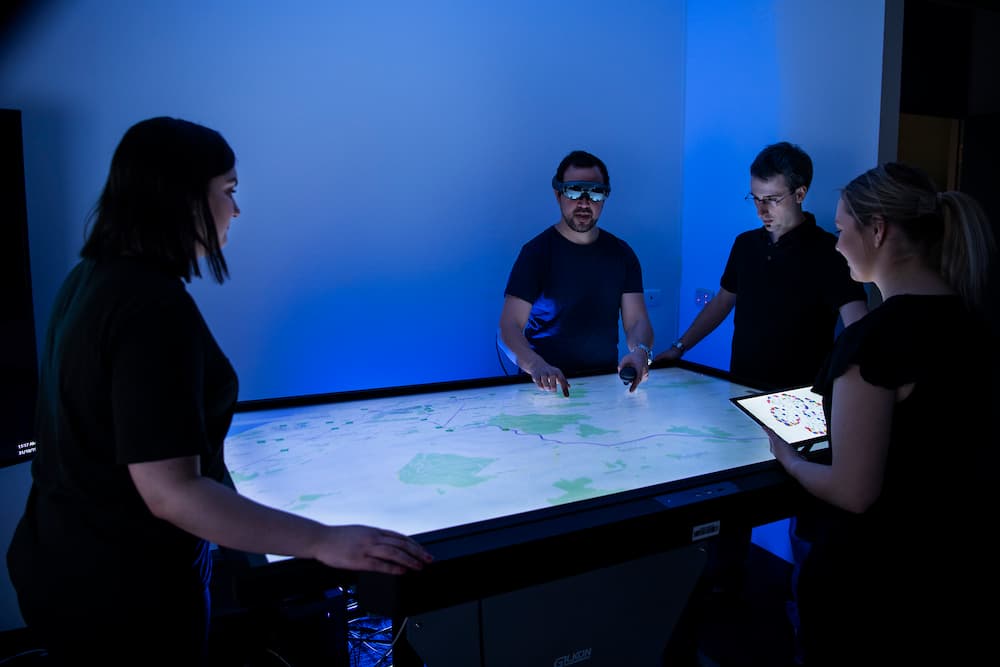13 November 2023
Author: University of South Australia’s Dr. Andrew Cunningham
Digital technology is constantly evolving, problem solving, and iterating. Traditionally, this interminable transformation has mirrored our ever-changing society; our paper-based office jobs turned to emails and instant messages in the early 2000s, made easier and speedier with Wi-Fi; Blockchain went mainstream in the 2010s as our online personal data became increasingly tenuous; and 2020 sent us into our homes and onto our phones, trigging a surge in videoconferencing and e-commerce technology.
This is all to say that digital technology has danced to the beat of society’s drum – its advancements have occurred to accommodate us. This status quo has now been squashed with the advent of AI, and, most notably, with Large Language Models such as ChatGPT. The [AC1] rapid and rampant rise of AI has us scrambling, and we are now left to alter our lives to accommodate it. ‘The horse has already bolted, and we’ve been dragged along for the ride,’ is a persistent refrain amongst my research colleagues – and I think it describes the situation well. The question is: how do we stay in the saddle?
Like with any new relationship, establishing trust is critical. Trust of AI is not just about having faith that AI will produce usable results. Trust, in this context, means being able to use AI that draws on relevant, accurate and ethical data, is then able to correctly analyse and contextualise this data, and, finally, generate a result that is reliable. Let’s remember that AI is smart, but it is not sentient. It cannot autonomously decide to disregard misinformation, errors, gaps, or inaccuracies. It only knows the data it is fed and trained on. This shortfall leads to AI hallucinations. A simple example of an AI hallucination is a Large Language Model generating a high school essay that uses completely made-up quotes and citations. A more critical example would be an AI-based system incorrectly forecasting wind speed during a bushfire, leaving emergency service crews in the wake of deadly smoke and flames.

Caption: Visualisation technology like VR and AU can help us uncover the underlying processes of AI
One of my key research areas at the University of South Australia (UniSA) is ensuring the data we use to inform our decision making can actually be interrogated and improved. Data Visualisation helps us achieve just that. As the name suggests, Data Visualisation refers to the representation of data in a way that allows people to understand, examine, and interpret complex information more easily through the use of visual elements like graphs, labels, and images. Effective Data Visualisation ensures that decision making leverages the potential of human ability, including lateral thinking, while forming the backbone of human-AI partnerships. My work at UniSA achieves these visual narratives by augmenting immersive technologies like Augmented Reality with Data Visualisation, allowing people to visually process data patterns.
A perfect example of my work at UniSA is a technology project designed to visualise the routes of fishing vessels and other marine vessels. Instead of staring at dates, codes, and coordinates in a static spreadsheet, our technology allows researchers, and defence force analysts, to wear a headset and immerse themselves in a live map and interact with data. By seamlessly overlaying visual representations of data onto the map, we gain the capability to explore a multitude of variables. For instance, we can assess how many submarines ventured near Australia's western coast in March or track the rapidity of international vessels along Indo-Pacific trade routes. Furthermore, we can visually predict scenarios like oil spills, piracy incidents, and gray-zone interactions. This foresight enhances our strategic and operational planning capabilities.

Caption: UniSA’s Dr Andrew Cunningham uses AR technology to visualise data patterns, like trade routes on a map
Data Visualisation plays a crucial role in addressing AI hallucinations – it allows us to illustrate the data flow within AI systems and reveal the processing of data at each stage. It also highlights various data sources, information provenance, and pre-processing steps, such as cleaning and feature extraction. Additionally, Data Visualisation allows us to map the architecture of AI's neural networks, including layers, neurons, and connections, which facilitates a better grasp of AI model complexity. Ultimately, by marrying Data Visualisation with AI, we can lift the lid on the intricate mechanisms and processes governing AI generations, and thereby fortify their trustworthiness. Conversely, failing to enhance AI reliability risks our own decision-making abilities and critical thinking skills. Therefore, our commitment to comprehending and improving AI with Data Visualisation extends beyond a technological endeavor; it is a safeguard for the future of human autonomy and informed decision making.
UniSA is#1 in Australia for research impact and engagement*. We work with organisations to identify industry opportunities, drive innovative solutions, and develop competitive capabilities. Our experts are people you can work with. Learn more about how UniSA can help your organisation.
*2018 ARC Engagement and Impact Assessment (EI), Combined Impact – Approach to Impact and Engagement on Assessed Fields
About Dr. Andrew Cunningham

As a senior lecturer at UniSA, and the Co-Director of the Wearable Computer Lab at UniSA’s Australian Research Centre for Interactive and Virtual Environments (IVE), Dr. Andrew Cunningham is an authority in immersive technologies, specialising in Virtual Reality and Augmented Reality. His research focus centers on making data accessible and understandable to empower individuals in a data-driven world.
Contact the Enterprise Hub
Get in touch with us to find out how we can support your business needs.
Make an enquiry online or call us to discuss your idea




